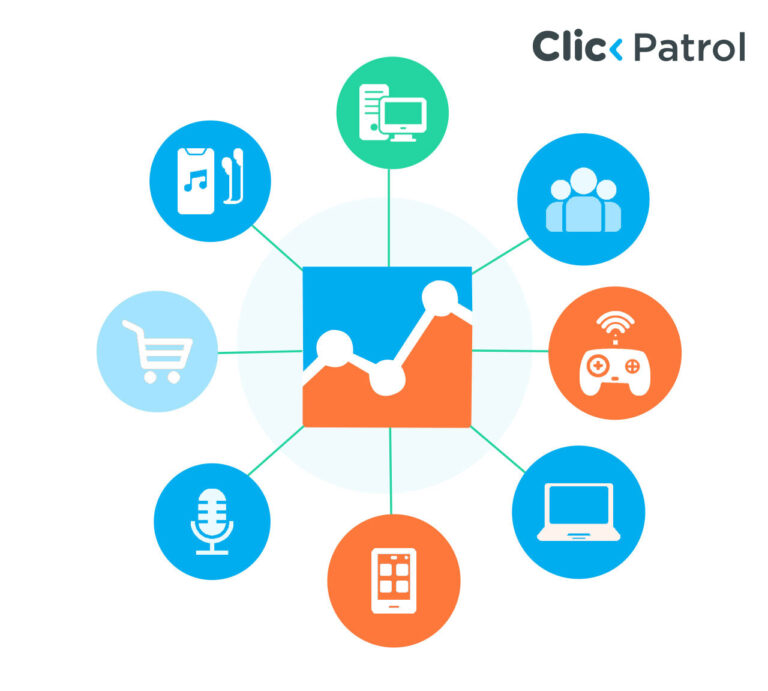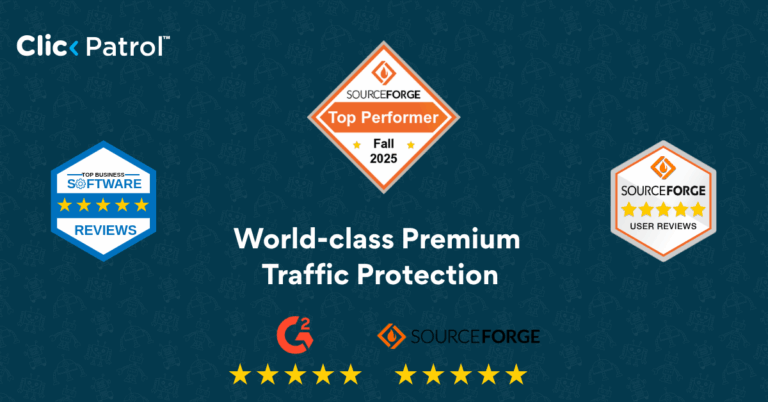
Impact of Programmatic Ad Fraud on Your Campaigns
Abisola Tanzako | Aug 02, 2024

Table of Contents
- What is programmatic advertising?
- What is programmatic ad fraud?
- How does programmatic fraud work?
- What impact does programmatic ad fraud have on your business?
- How to stop programmatic ad fraud?
- Which software solutions are the best at preventing programmatic ad fraud?
- The easiest way to avoid programmatic fraud
- FAQs
How does programmatic ad fraud affect PPC?
Businesses can gain many new clients by using online advertising. This makes sense, given that more than 4.6 billion individuals use the internet regularly. Programmatic advertising is very effective internet advertising, with an average cost-per-lead (CPL) of $38. This is in contrast to traditional advertising channels like TV, radio, and print, where the average CPL is $619 (Source: Linchpin SEO).
This explains why it was estimated that US advertisers spent over $106 billion on digital display ads in 2021. But with so much money at stake, it is only a matter of time before fraudsters appear to try to exploit those attempting to run programmatic ads. In this article, we will discuss programmatic ad fraud, how it works, and, more importantly, what steps you can take to prevent your programmatic ads from being fraudulent.
What is programmatic advertising?
Before getting into programmatic ad fraud, It’s important to understand the concept of programmatic advertising.
Programmatic advertising is a technique that employs software to determine the best time and location to display ads to a target audience. When determining which ad to display in front of the audience, the software may take into account several criteria and characteristics, such as:
- The browsing history of the user.
- The amount that the advertising merchant bid for the ad spot.
- Keywords related to the webpage being viewed and the user’s recent search and browsing history.
The primary objective is to place a proper advertisement in front of an interested audience at a moment when they might be receptive to the service or product being advertised. While videos or banner display ads on websites are the most common formats for programmatic ads, they can also take other forms.
What is programmatic ad fraud?
Programmatic fraud is a form of ad fraud that involves fraudsters attempting to profit financially from programmatic advertising. The tactics used by fraudsters differ depending on the kind of programmatic ad fraud campaign. Due to the many revenue models and varying degrees of protection that ad networks may offer for their programmatic ad platforms, there are numerous ways to target programmatic campaigns.
How does programmatic fraud work?
Programmatic ad fraud takes many forms, all aimed at defrauding ad networks and advertisers of their money. Many of these tactics use malware, bots, and even human fraud farms to help the fraudster generate the most money in the shortest amount of time and effort.
Typical programmatic fraud techniques include the following:
1. Spoofing website domains to inflate bids
A common fraud tactic is domain spoofing, which aims to deceive programmatic advertising networks and, by extension, their clients of money. Fraudsters use this fundamental tactic to increase the amount they may charge for advertising space: They take one website and attempt to pass it off as another, more valued one.
For instance, a fraudster could discover that Wakerpedia.com is a well-known website with a lot of traffic and build a website that mimics its design with a different domain name, such as Wackerpedia.com or Wakerpedla.com, and pass it off as the more well-known website. Ads on the site may require unsuspecting victims to pay a premium for their ads to show on their site.
The worst thing about this tactic is that it frequently involves far more than siphoning off funds from ad networks and their customers. The counterfeit websites are frequently infested with spam and malware, and any advertisements that show up there could be linked to them. As a result, the brands that are promoting these advertisements may suffer.
2. Ads stacking and stuffing pixels
Some scammers attempt to take credit for “displaying” an advertisement when they have not done anything at all. Fraudsters can use techniques like ad stacking and pixel stuffing to take credit for “showing” advertisements to website visitors when, in reality, the visitor has no chance of seeing or clicking on the ad.
The “ad stacking” technique involves burying advertisements on a page to increase impressions while utilizing less “real estate” on the website. Every ad on the page is layered on top of every other one, taking up the same space. Since just the top ad is displayed in this situation, it is the only one with a chance of running. Even though they generate an impression, the other ads are hidden and inaccessible, meaning they do not yield any results.
Another method fraudsters use to place more adverts on a webpage without taking up a lot of space is pixel stuffing. In this fraudulent technique, the display ad or video is reduced to a single pixel on the page. This is significantly worse for marketers than ad stacking because at least one ad will be displayed. Pixel stuffing eliminates the possibility that website visitors will see and respond to the advertisement.
3. Click fraud
Some scammers use click farms or bots to click on advertisements repeatedly to generate revenue from programmatic ads that pay for clicks instead of impressions. An amateur can easily build up a network with hundreds, thousands, or even more bots that can click on ads from a range of IP addresses by purchasing a basic botnet, which does not cost much.
Click Farm is a group of real people often employed in sweatshops abroad who use a range of digital gadgets and attempt to click on advertisements as quickly as possible while hopping between devices, browsers, and emulator programs. This strategy may be unaffordable due to the high labor cost, but workers in these farms make so little.
What impact does programmatic ad fraud have on your business?
On average, about 10% of programmatic display ads are fraudulent. Because of this, programmatic ad fraud needs to be carefully examined because it could be detrimental to businesses. Fraudsters try to manipulate ad impressions, clicks, or conversions using programmatic ad fraud.
- Financial losses: Because clicks on this advertisement aren’t from actual people, advertisers are responsible for paying for clicks or impressions that never happened. As a result, advertisers will eventually run out of money and will not receive conversions.
- Reputation of your brand: When fraudulent advertisements show up on your website, it could harm your brand’s reputation. Also, how many unrelated websites help you achieve your marketing objectives and target audience? In order to succeed, you will have to put in more work.
- Data accuracy: Fake impressions, clicks, irrelevant websites, and the like surely distort analysis and make data inaccurate. Thus, inaccurate data leads to misguided marketing tactics.
How to stop programmatic ad fraud?
Even if there is not a silver bullet that can eliminate 100% of all ad frauds, there are steps you can take to safeguard your business and stop, to a large extent, the impact of ad fraud. It could prove particularly challenging to stop programmatic fraud because it frequently occurs on websites that are not under your control. However, you can take a few steps to prevent programmatic fraud. They include:
- Examining the websites where your advertisements are appearing: Examine the site’s registry information to make sure the publisher or owner’s name corresponds with the information provided, examine if the domain is even known to provide advertising space to other businesses, and look for any indicators that could scream spoofing
- Verifying the anti-fraud metrics that the RTB (real-time bidding) platform employs: Are these measures certified by a reputable certification authority like the Trustworthy Accountability Group (TAG) for fraud prevention? If so, check out the TAG register to ensure they are genuinely listed. Many platforms that advertise anti-fraud security are using single-metric filters that are not very good at stopping fraud.
- Examining your marketing performance for anomalies: Ad fraud (or poor ad placements) may be the cause, for instance, if you see a significant spike in clicks but no increase in leads or sales.
- Ad verification tools guarantee that your adverts are displayed on appropriate content and are viewed by actual users in the appropriate geographic area.
- Recognize the sources of your traffic. Collaborate with reputable publishers to reduce the likelihood of false traffic.
- Keep an eye out for odd behaviors in the data from your advertising effort.
- Educate the people on your team about the dangers of ad fraud and how to avoid it.
- Verify the security of your advertising agreements and contracts against fraud. Otherwise, you might be unable to seek help to hold the contractor accountable for providing a solution when an issue arises.
- Put safe ad-serving procedures in place for your website.
- Check the billing and payment details for advertising campaigns.
- Consider employing third-party auditing to identify ad budget issues that can indicate fraud.
- Applying advanced fraud solutions to programmatic ads: With an ad fraud solution, you can automate programmatic fraud detection and eliminate the need for a rigorous evaluation of marketing data to spot patterns that point to fraud. With a trustworthy ad fraud solution, you can prevent dishonest people, increase programmatic campaign conversions, and, if necessary, present fraudsters with proof of their wrongdoing.
Which software solutions are the best at preventing programmatic ad fraud?
- ClickPatrol: Uses advanced algorithm to protect your ads from bots and invalid clicks.
- Human Security (previously White Ops): They identify and eliminate dangers propagated by bots.
- DoubleVerify: Their goal is to help brands boost the efficacy of their online advertising while also making the advertising environment safer.
- Integral Ad Science (IAS): They work to make sure that actual people see ads on relevant placements by establishing a foundation of transparency and trust.
- Oracle MOAT: Moat analytics provides solutions for viewability, pass-through traffic avoidance, and brand safety by analyzing pre- and post-bids.
- Pixalate: They assist in identifying fraudulent traffic for websites, mobile devices, and connected TVs by utilizing real-time fraud solutions.
- AdSecure: This three-stage approach provides complete detection and protection by automating the ad verification process both before and during the ad campaign’s launch.
- Forensiq by Impact: Their committed group of data scientists constantly develops new tools and techniques to safeguard your online purchases.
- Anura: Anura safeguards your online assets and ensures that actual people see your content, regardless of the industry or marketing channel.
- TrafficGuard: They stop fraudsters and bots from causing havoc with your online advertisements.
The easiest way to avoid programmatic fraud
Finally, we can state that programmatic ad fraud never ceases. Fraudsters will devise new strategies as technology advances, and the industry will continue to face challenges in the ongoing fight against ad fraud. Advertisers may still preserve their dependability and safeguard their ad spending, though. They need to know how programmatic ad fraud operates, what happens, and how to avoid it.
Using an ad fraud solution is the easiest and most effective way to avoid fraud among the abovementioned methods. It eliminates the need for human data analysis, which frequently takes years of expertise to detect fraud correctly. You can instead concentrate on what really matters to your business and leave the detection to the professionals.
FAQs
Q.1 What effect does programmatic advertising have on consumers?
Programmatic advertising can improve customer satisfaction and engagement when used correctly. Brands can generate more significant interactions by presenting relevant advertisements. Sarah and other consumers like her value when companies cater to their requirements and give helpful information instead of spamming them with unrelated messages.
Q.2 Will programmatic advertising expose me to online fraud?
No, programmatic digital advertising does not expose you to online ad fraud. There have always been fraudsters preying on the unsuspecting advertisers. There is a great deal of opportunity for fraud when it comes to something as new as programmatic ads because so few people truly understand the technology.
Q.3 Is a programmatic ad platform found on the Google display network?
No. The Google Display Network does not support programmatic advertising. Despite what many advertisers wrongly think, the Google Display Network differs from any other. Google’s display network is a closed channel. It’s just an existing AdSense account-linked network of publishers and suppliers.
Actual programmatic digital advertising Demand Side Platforms (DSPs) link you with considerably more publishers and exchanges than targeting, real-time bidding, and machine learning for ad personalization.





